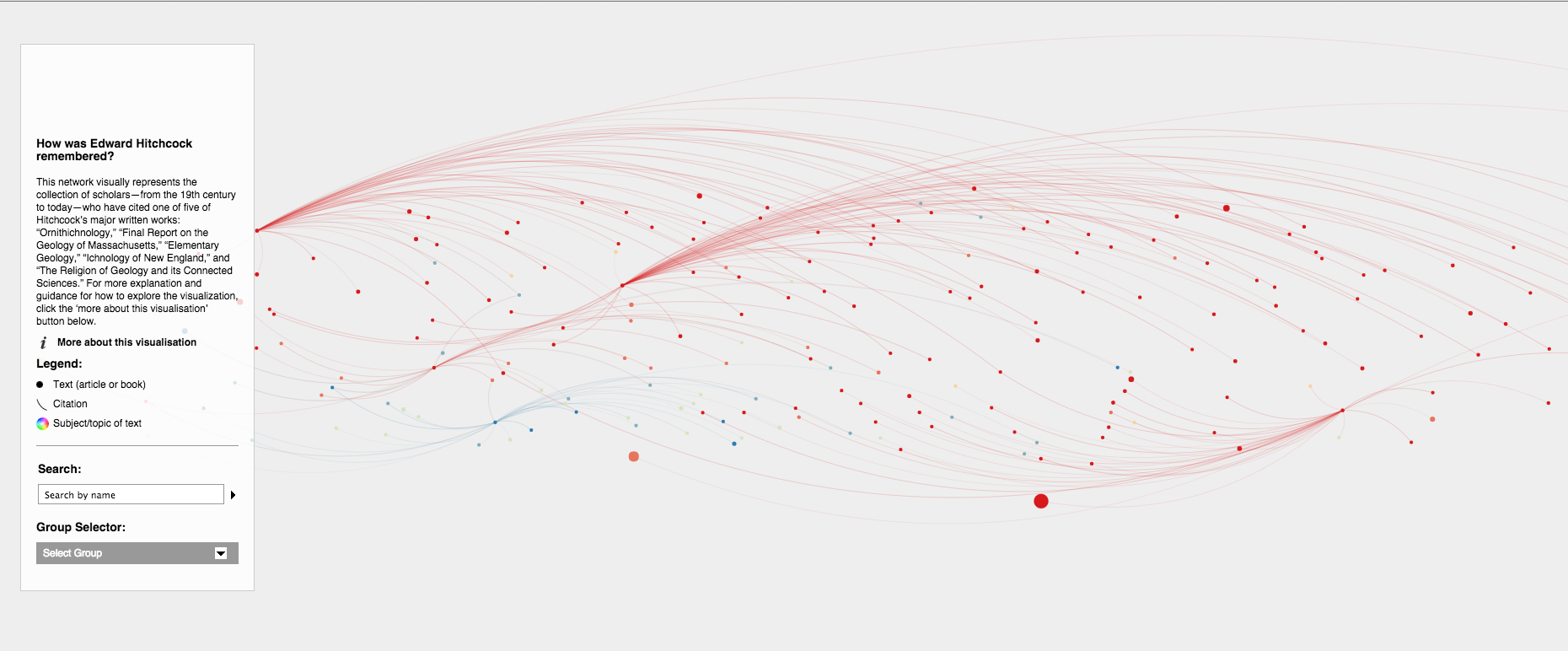A man to be remembered is a man to be spoken of.
J.P Lesley, 1866
Edward Hitchcock’s intellectual legacy is alive and well among the verdant green lawns that make up the campus of Amherst College, where he lived and taught from 1825 until his death in 1864. The elegant glass-paneled building that houses the college’s museum of natural history and geology department is a physical reminder of Professor Hitchcock’s contributions to mineralogy and geology—a department that Hitchcock established at Amherst and remains popular today among students.
Well-known during his lifetime for the geological surveys he conducted around New England and his theory that the mysterious footprints found in sidewalk stones were the tracks of prehistoric birds, Hitchcock gained notoriety in the scholarly community for his scientific acumen and spiritual outlook. A prolific writer, he penned over a hundred individual works on topics in science, religion, and the connection between the two.
But what happened to those words? Were Hitchcock’s ideas merely momentary flashes in the forward march of intellectual progress, or are they still relevant today?
The Citation Networks
Edward Hitchcock died 140 years before Facebook was launched, allowing communities to see the connections and linkages between their seemingly disparate relationships. Although he never had the opportunity to experience this modern social network— the exasperation of being “poked” by his high school classmates or having his status shared by his wife’s cousin’s boyfriend—Edward Hitchcock’s ideas are nonetheless lodged at the center of a vibrant network of scholarship that is still active today.
This network is not composed of social relationships but citations: writers and scholars who were not only reading Hitchcock’s works but referencing him as an authority on a topic. In tracking when and how Edward Hitchcock’s writing appears in the bibliographies of other scholars, we are able to see the true reach of Hitchcock’s influence on the intellectual community in the 151 years since his death.
Fast Facts
Who: Edward Hitchcock. Any writer or scholar who referenced (some of) his works in their own writing.
What: Five of Hitchcock’s most noted and popular publications.
When: 1864, the year of Hitchcock’s death, until 2015.
Where: Journal articles. Books. Doctoral theses. New York. Argentina. Saskatechewan.
How: All citation data on Hitchcock’s work drawn from Google Scholar. Graphs made with Gephi networking software and Sigma JS.
Explore the Networks
Static Graph
This graph visualizes the linkages between five of Edward Hitchcock’s major works and who has cited them. Click on the image for a closer look. A guide to reading the network graph can be found here.
Interactive Graph
This is an interactive version of the still image above. Click on the graph image to explore the details of the citation network and the connections between Hitchcock and his readers.


